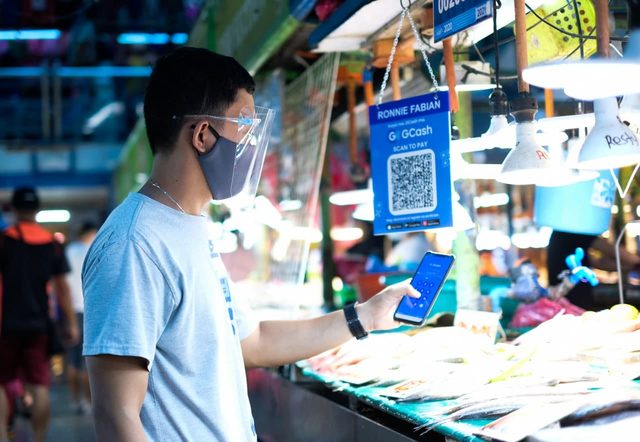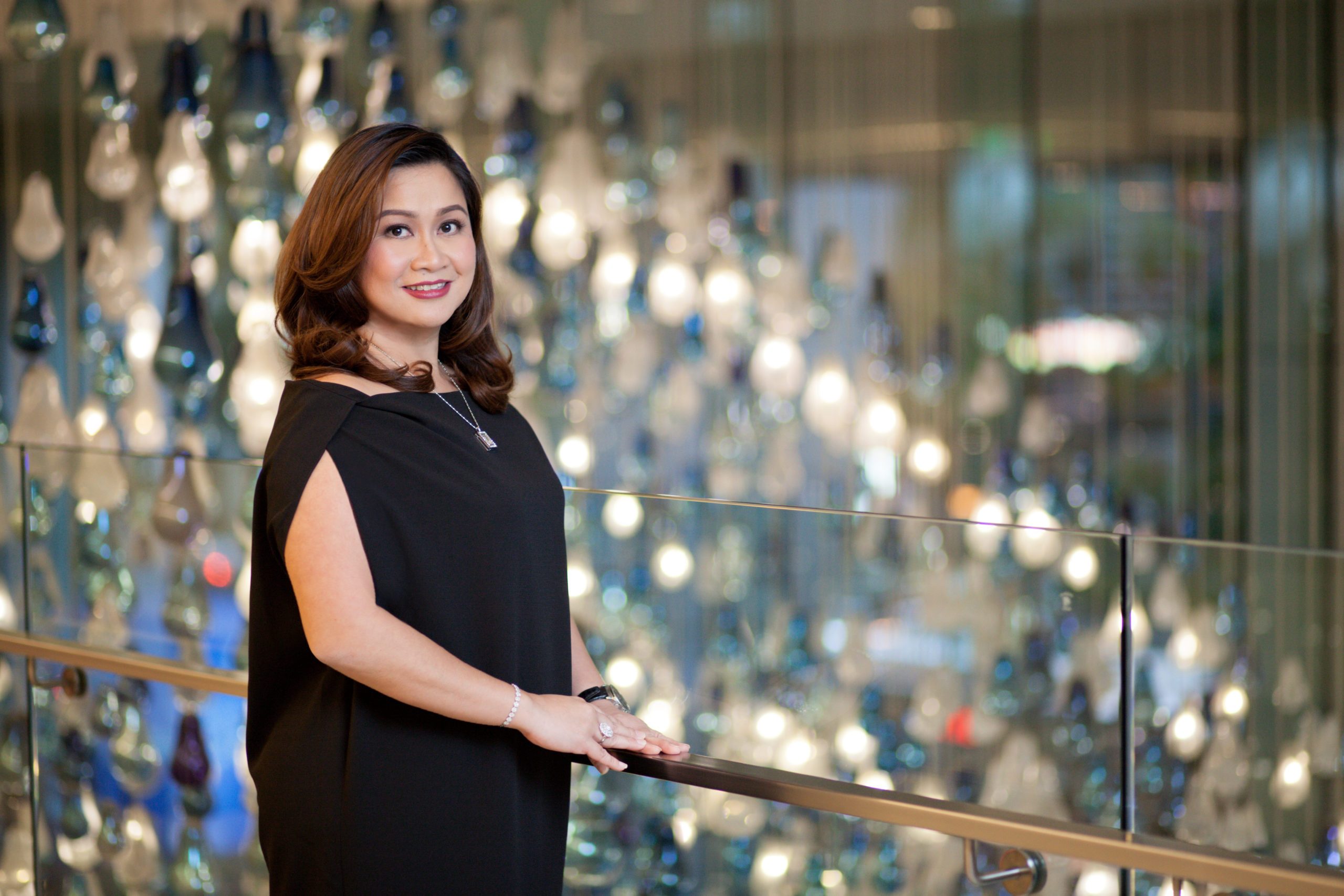Partner content in association with Globe Telecom
How the Philippines-based GCash more than doubled its user base through the COVID-19 pandemic
Mynt’s Martha Sazon
Insights from Mynt President and CEO Martha Sazon on bridging the gender gap in VC funding, and what it takes to build a high growth digital company with a motivated, agile team, plumb in the middle of a global pandemic
Martha Sazon, President and CEO, Mynt, believes substance and credibility can actually help turn the tide when it comes to addressing the gap in funding between women founders and their male counterparts.
Sazon spoke of her first experience fundraising for Mynt’s flagship GCash app in a recent DealStreetAsia webinar ‘Is VC funding for women founders getting any better?’ sponsored by Globe Telecom.
In June 2020, plumb in the middle of the COVID-19 pandemic, Sazon came on board at Mynt, a fintech startup partnership between Globe, the Philippines-based conglomerate Ayala Group, Ant Group and New York based private equity firm Bow Wave Capital. She acknowledged that the first few months were a struggle as she came to grips with a new industry. Conversations with potential investors in GCash went on for months. But things changed for the better through the course of the year, thanks to GCash’s remarkable growth trajectory. In January 2020, GCash had 20 million users which had expanded to 33 million by the end of the year. As of July 2021, the number of users stands at around 46 million.
Sazon said, “As we grew, I would find myself receiving cold calls or someone reaching out from anywhere and everywhere in the world; even introducing themselves on LinkedIn. Everything starts off with a connection, but apart from that, it is the track record that the business builds which matters. Investors are now more aware of what we can do for fintech.”
Another challenge that emerged during negotiations was trying to find out what the company stood for. Sazon said, “I had to read the situation, trust my instincts and prepare. What also really helped me remain unfazed was the full support of my team. My mantra is that there has to be substance and credibility, rather than just winging it, which a lot of people try to do.”
Along the way, Sazon managed to move the dial for women at the company. At GCash, women account for almost half of the total workforce and the same goes for those in management positions. She said, “Before I came in, there was only one woman on the 10 member management committee – the chief customer experience officer. But now, 5 of 12 are women and more women are coming into the organization. The split is almost 50:50. We are not just revolutionising the presence of women in our company, but in fintech as well. Being the market leader, we are setting a trend. Young women say ‘ Oh, I want to be like that’. It has a lot to do with role modeling; someone just has to pave the way.”
DealStreetAsia spoke to Sazon on growing GCash in the middle of the crisis and driving Mynt’s vision of ‘Finance for All’. Edited excerpts:
You took charge of GCash at a very difficult time — with the pandemic raging, no clear roadmap on vaccines and global lockdowns. What were some of your first priorities?
The first priority was to learn the ropes even while making decisions and managing a team that I had never met face to face. There were days when I had 11 meetings, figuring out Zoom as I went along, like everyone else. Despite the busy schedule, it has been very fulfilling because of the impact GCash has on people’s everyday lives.
My other priorities in the first 100 days centred around better collaboration, simplified communications and a one-click customer experience.
There are a lot of great employees in GCash, even before I came in. The best way to unlock their potential was to create a more collaborative space. At GCash, it was like being given a futuristic, feature-packed spaceship. My challenge was to figure how more Filipinos could be made aware of it, in the simplest way possible. If our goal was really ‘Finance for All’, we had to ensure that our app is positioned for people from different walks of life. I asked the marketing and product teams to review our communications and user experience to make it more understandable for everybody.
How did you adapt your management style when faced with a homebound team in a high growth company?
Our rapid growth resulted in overstretched roles; a lack of social energy due to WFH (work from home) and difficulty in strengthening purpose and culture. It was hard to assimilate the organisation’s values — especially for new hires — when we were not working around each other. The added demands really tested our resiliency.
But when everything seems uncertain, one of the most important things is to feel that you’re not alone. We launched inclusive programs to bring everyone together.
We conducted reorganisations focused on more efficient collaboration; headcount and benefits reviews to keep up with growth, as well as providing all necessary WFH tools.
To engage and connect, we launched frequent leadership talks and town halls; I myself have held more than 30 coffee talks and 7 organisation-wide town halls since joining.
Having a strong and defined purpose that is properly communicated contributes to success. We launched Purpose@GCash to make sure our vision, mission and values are aligned with our priorities and fit the times we are in.
With a user base of 46 million at present, the trajectory of GCash has been remarkable. What are some of the factors that contributed to this growth?
When the world closed down, we helped keep the economy going. We provided users easy access to transfer money and purchase essentials. We enabled merchants to accept cashless payments and now have over 2.5 million of them on our platform.
Most importantly, we became the platform of choice to help other people. We partnered with various LGUs (local government units) to implement a safer, cashless Social Amelioration Program, helping to distribute 16 billion PHP (approximately $318 million) worth of government aid to 2 million Filipinos.
We also trended on social media as the easiest way for people to donate to victims of COVID-19 and super typhoons. Our digital campaigns helped raise over 40 million PHP (approximately $796,000).

GCash also partnered with LGUs to introduce payment solutions (specifically QR) to tricycle driver associations and wet market vendors. We made payment and financial services more accessible to the ones who need it most — our enterprising Pinoys.
GCash recently expanded its bouquet of offerings with GInsurance and GInvest. What drove the launch of these services?
These services catered to the unique challenges brought about by the pandemic. Studies showed that consumers, especially the younger generation, are highly concerned about the pandemic’s impact on financial security — specifically, how they can preserve and grow their hard-earned money. Ever since we launched GInvest, it has tripled the number of UITF (unit investment trust fund) subscriptions in the country. With users worried about the financial impact of a possible hospitalisation, we offered health coverage through GInsure. In one day in 2021, we even doubled the insurance registrations in the Philippines. This clearly illustrated the existing demand. People appreciate the value of being able to manage finances without needing to physically go to a bank or hiring a financial advisor. More than convenience, we have been able to give them peace of mind.
How have GCash’s shareholders helped with its recent growth?
Our dynamic with the shareholders is that of receiving guidance, but being empowered to make our own decisions. With its significant nationwide reach in terms of mobile users and distribution, Globe allows us to expand and introduce exclusive products/perks. For instance, subscribers can get free dengue and COVID-19 insurance, if they buy certain SKUs.
In 2020, we migrated to Ant Financial’s best-in-world platform, used by millions of accounts worldwide. We benefit from their years of experience in creating a safer platform as well as game changing products such as Pay QR and mini-apps under GLife.
Ayala provides opportunities to partner with companies across different industries. More recently, we have Bow Wave who has expertise in Asian fintech.
Speaking of GLife, how did you decide to come up with an in-app aggregator? What sort of a role does data play in the creation of such a product?
Data helps us determine friction points and guides our innovation. Besides, we have weekly sessions devoted to examining customer drivers. Our products and services are developed based on data and what we learn during these sessions.
Data has been key in launching GLife It helps our partners reach a new digitally savvy audience on our platform. We provide a data-driven approach to marketing, guiding the right customers to the mini-app, with a customisable user experience and an easy payment service.
So far, the collaborative marketing initiatives have included one with a prominent fast food chain, resulting in a huge surge in demand, with thousands of orders over the course of a day.
Considering your large base of active users, where will future growth come from?
While acquisition is still a priority, we also work to better serve our existing customers, as the world opens up. We offer our merchants support, DIY services and even credit propositions. We will be expanding GLife beyond food into other aspects such as content, gaming and entertainment.
The Philippines is a sachet economy for payment. And so, we make our services affordable, with better payment terms. Another focus area is Filipinos abroad: almost 10% of the economy is from remittances. We want to make these easy and inexpensive. Through GCash, people can send money, pay bills, and even save or invest, all on a single platform.
Globe Telecom was the sponsor of the DealStreetAsia webinar ‘Is VC funding for women founders getting any better?’ If you missed the webinar or want to view a recording/transcript of the session, please click here



